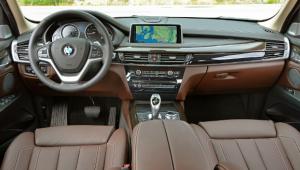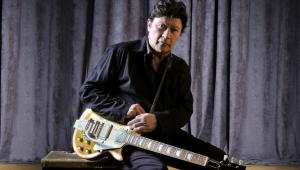Crestron Adagio Entertainment System Page 3
Though it's not a mandatory component, Crestron also included its four-stream Adagio Audio Server with matching remote (AAS-4, 250GB, $6,800), which occupies four source inputs on the AES. The AAS is a full-fledged server in its own right and could have an entire review dedicated to it. In short, it handles MP3, WMA, and WAV formats, automatically retrieves album information, and provides all the build quality and user control and management options you'd expect from a top-shelf product. Adding a more advanced touchpanel controller with a video display to the AES or AAS (like Crestron's TPS-4L, $1,250) allows you to view cover art along with the song/album info - an extra bit of razzle-dazzle that always impresses me. And since the server was designed to be plug-and-play with the Adagio system, it interacts seamlessly with the APAD controller. Adding music to playlists on the AAS directly from the APAD is so easy that party guests could quickly learn to do it, creating an ever-changing source of music for your next gathering.
In-ceiling speakers - typical with whole-house audio systems - can be a little shy on bass, so being able to adjust bass and treble from the APAD independently in each zone was a plus. There's also a selectable loudness-compensation mode that I preferred for low-volume listening. Sound quality was good, though I felt the multichannel amplifier in the AES could use a little more juice. No matter how many speakers it was driving, I found that I listened at the upper end of the volume range most of the time and ran near max to get enough oomph! for poolside listening. If you like to rock out or you have a large room, budgeting for an external amplifier might be prudent.
BEYOND AUDIO Yes, the AES is a competent audio distribution system, but, to quote Crestron, "Audio is just the beginning."
Like the Trojan horse, every Adagio system has something packed inside: Crestron's Series 2 processor. This is the heart and soul of full-blown Crestron automation and control systems - an equivalent standalone model sells for $1,600.
"What can it do?" you ask. How about virtually anything. Start by adding any of Crestron's wired or wireless touchpanels for full two-way communication. Then you can easily integrate your entire home theater system. But don't stop there . . . add your lighting, climate-control, and security systems as well. The processor also incorporates full Web-based control. The AES front panel has buttons labeled HOUSE and SCHED, just itching to be filled with something. Of course, this requires professional programming and additional modules, but the infrastructure is there and waiting for the day you're ready to use it!
BOTTOM LINE The Crestron Adagio Entertainment System surprised and impressed me in a number of ways. Interestingly, even though it installs easily, Adagio is not meant for end-user installation - Crestron intends it to be sold, installed, and serviced by its dealers. Although it's not as inexpensive as a typical audio distribution system, its potential automation capabilities make it a downright steal. Forget the old adage about Greeks bearing gifts: Welcome Greeks (or anyone else) bearing Adagio!























































